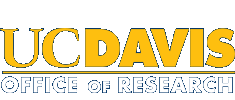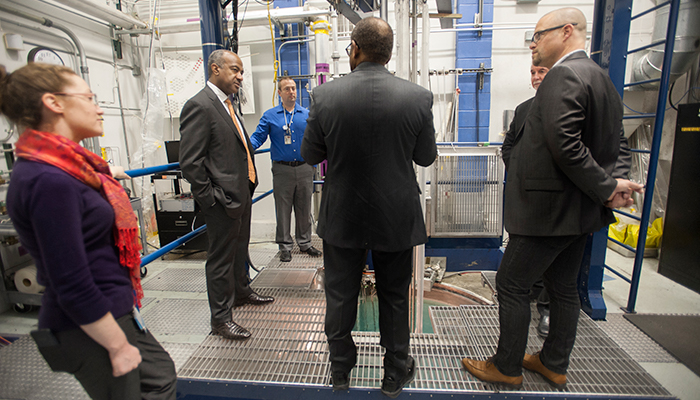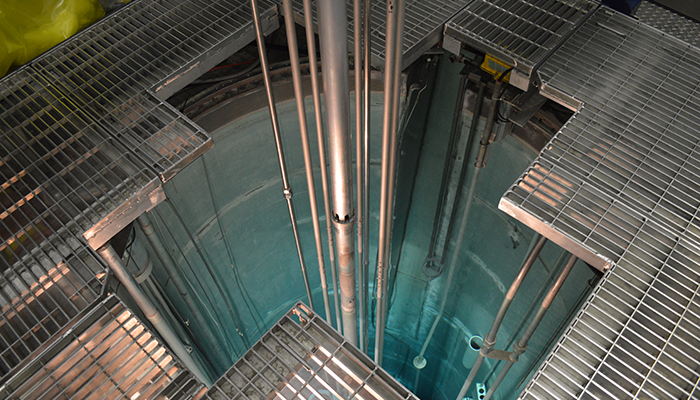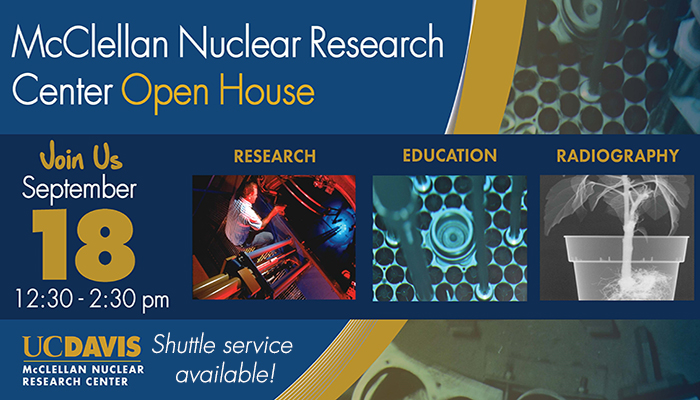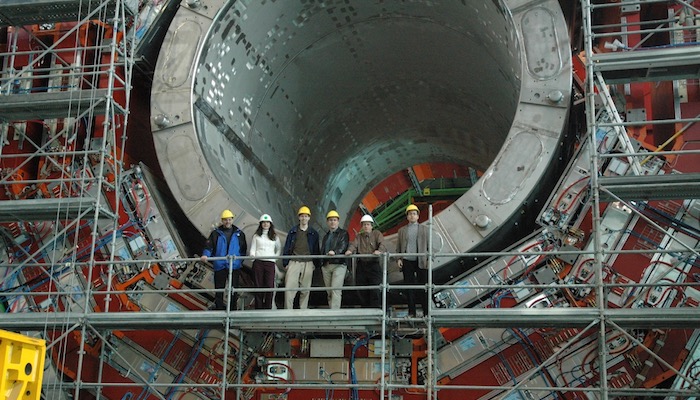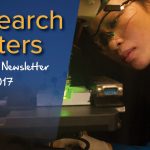UC Davis Is Educating and Inspiring the Next Generation of Nuclear Scientists
By Lisa Howard
January 18, 2018
High school and college students in the greater Sacramento region have a unique opportunity to learn about nuclear science at the UC Davis McClellan Nuclear Research Center.
A new educational outreach program, the Nautilus Program, named after the U.S. Navy’s first nuclear submarine, is giving students hands-on experience with MNRC’s nuclear reactor, the largest university-operated reactor on the West Coast. The program also gives students a chance to learn directly from veterans who have been part of the U.S. Navy’s nuclear program. Exposing students from diverse backgrounds to different aspects of STEM careers is one of the main goals of the Nautilus Program.
“I think there is a real need for this type of STEM engagement with young students in the community,” said Wesley Frey, director of MNRC. He notes that his own interest in science was inspired by trips to the Lawrence Hall of Science and the Stanford Linear Accelerator when he was a young student. “I want to give local students a chance to come out to the facility, perform some hands-on experiments and see something that very few people get to see — an operating nuclear reactor.”
Science teachers from high schools and colleges who are interested in participating can visit the facility and safely see MNRC’s nuclear reactor operate. Students and teachers may select one of several hands-on experiments to conduct at the facility during their visit. These experiments are tied closely with the State of California Next Generation Science Standards.
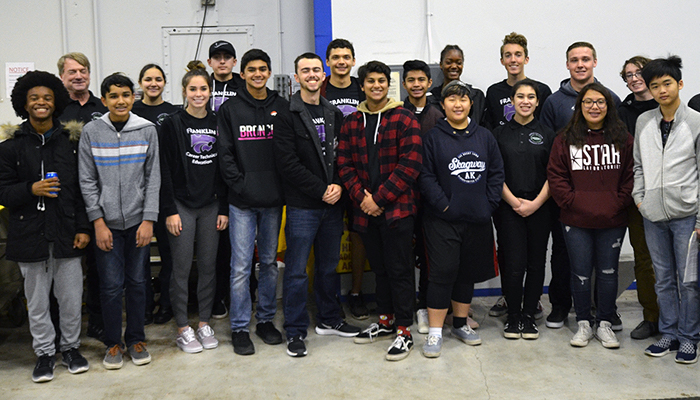
Students receive a tour of MNRC’s nuclear reactor, January 11, 2018. MNRC’s new educational outreach program is working with local area schools to expose students from diverse backgrounds to different aspects of STEM careers. (AJ Cheline/UC Davis)
“I can’t think of a better way to demonstrate the power of the scientific method than to have the students and their teachers safely stand 20 feet above an operating nuclear reactor,” said Frey. “Ultimately, I would like young students that visit the facility to leave with a little better understanding of nuclear physics, but more importantly, I hope seeing the blue glow from the reactor” — a phenomenon known as Cherenkov radiation — “leaves them more curious about the physical world than when they arrived,” he said.
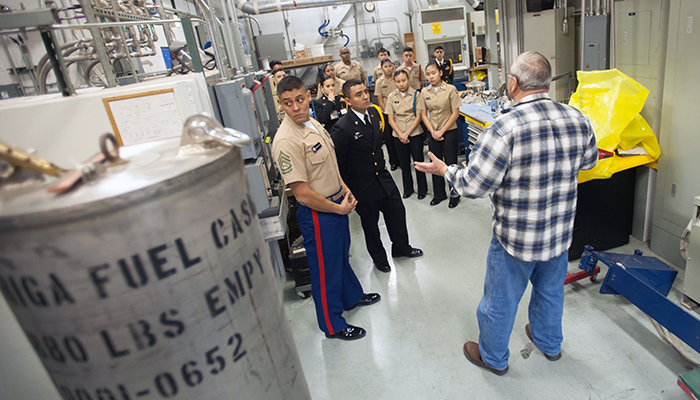
ROTC students receive a tour of the McClellan Nuclear Research facility on Jan. 11, 2018. A new educational outreach program, the Nautilus Program, is giving students in the great Sacramento region hands-on experience with MNRC’s nuclear reactor, the largest university-operated reactor on the West Coast. (Gregory Urquiaga/UC Davis)
MNRC has partnered with the Luther Burbank High School Naval Junior ROTC, as well as with Sacramento City College, the UC Berkeley Naval ROTC and other area institutions. MNRC is also working with local teachers through the Sacramento Area Science Project.
The Nautilus Program is supported by a grant from the U.S. Office of Naval Research. Retired U.S. Navy Vice Admiral Mel Williams Jr., a former nuclear submarine officer, is providing support for the Nautilus Program.
Students who attend the tours, and are interested in learning more about nuclear science, can apply to participate in one of MNRC’s more intensive summer programs through a UC Davis outreach program.
A new series of courses is also being offered at UC Davis as part of the Nautilus Program. The “Designated Emphasis on Nuclear Sciences classes,” offered by the Department of Physics, will be available to UC Davis undergraduate and graduate students who are studying math, physical sciences or engineering. The first course is radiation health physics and the second, which is being offered this spring quarter, is an introduction to nuclear engineering. A third course will be announced at a later date.
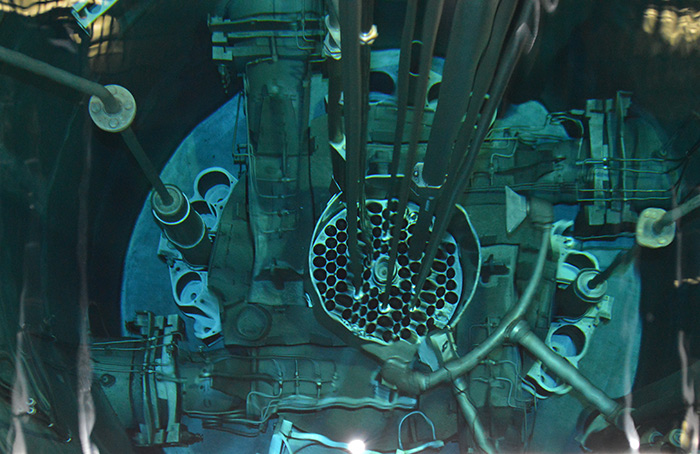
Science teachers from high schools and colleges who are interested in participating can visit the facility and safely see MNRC’s nuclear reactor operate. Students and teachers may select one of several hands-on experiments to conduct at the facility during their visit. These experiments are tied closely with the State of California Next Generation Science Standards.
MNRC’s 2-megawatt reactor has been active since Jan. 20, 1990, and was originally used by the U.S. Air Force to detect miniscule flaws in aircraft parts using neutron irradiation. It has been owned and operated by UC Davis since 1999. The center continues to test parts — including neutron irradiation testing of flight-critical rocket rings for one of NASA’s missions to Mars — as well as performing a variety of other services including neutron irradiation, a process that determines the impact of radiation on materials properties and device performance.
The USS Nautilus, the program’s namesake and the world’s first nuclear-powered submarine, made its maiden voyage on Jan. 17, 1955. Upon launch, the commanding officer signaled a memorable message, “Underway on Nuclear Power,” which the MNRC Nautilus Program has taken as its motto.
A Legacy Celebration for the Nautilus Program is being planned to occur each January to observe the Underway on Nuclear Power anniversaries. This year is the 63rd anniversary for the launch of the USS Nautilus and the 28th anniversary for MNRC.
The next scheduled event for the Nautilus Program is STEM Career Day on Feb. 28. Teachers and students who are interested in the Nautilus Program are encouraged to contact Frey at [email protected].
Media Contacts
- Wesley Frey, Director, McClellan Nuclear Research Center, 916-614-6200, [email protected]
- AJ Cheline, Director of Communications, Office of Research, 530-752-1101, [email protected]
Media Resources
- McClellan Nuclear Research Center (MNRC)
- The Nautilus Program
- At 27 years old, MNRC remains one of “newest” nuclear reactors in U.S., but industry may be waking up
- UC Davis’ McClellan Nuclear Research Center on Forward Path
- McClellan Nuclear Research Center: energizing neutrons and minds
- Our Research Reactor, Across the Causeway
[addtoany]
Tags
More Stories
